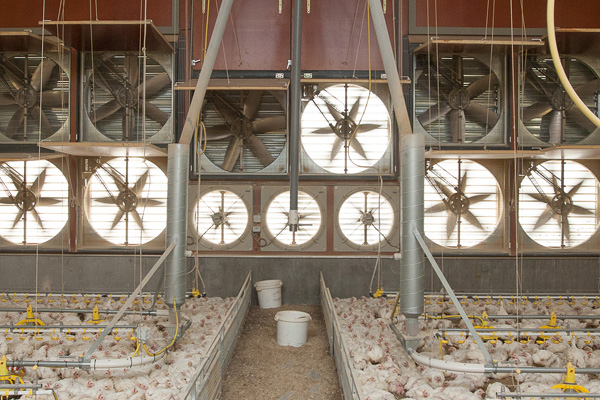Improving attic inlet ventilation

Sourcing incoming ventilation air from the attic space of a broiler house provides a means to implement passive solar energy capture. Currently, no prescriptive guidelines for attic inlet placement exist, and variability of attic temperature may reduce energy extraction.
The goal of this project was to improve energy extraction efficiency through computational fluid dynamics (CFD) simulation.
A 13.1 x 155.4 m commercial broiler house (oriented east-west) was monitored in northern Alabama to develop boundary and initial conditions for the simulation analysis. A data acquisition system was constructed in the attic space to measure temperature in the vertical plain above a single attic inlet under winter conditions. The data was used to develop a CFD model of attic inlet ventilation; 24 combinations of attic inlet location, attic inlet riser height, and the presence of a ridge diverter were simulated. The simulation model demonstrated that installation of a riser is critical to prevent intake of cold air from the eave areas, regardless of placement.
Placement of a 2.44 m diverter along the north roof surface and a 1.3 m riser on a centrally located attic inlet may increase thermal energy extraction by 40% to 50% over an attic inlet flush mounted with the ceiling. Placing a 1.0 m riser on an offset attic inlet under the south roof surface may increase extraction by 20%. Numerical simulation successfully identified candidate design options for testing under field conditions and reduced design and analysis cycle duration.
Source: Jonathan Olsen, Jeremiah Davis and Brian Luck, Agricultural & Biological Engineering Department, Mississippi State University, MS USA and Joseph Purswell, USDA ARS Poultry Research Unit, MS USA
Proceedings of the 2013 International Poultry Scientific Forum, Atlanta, GA USA













